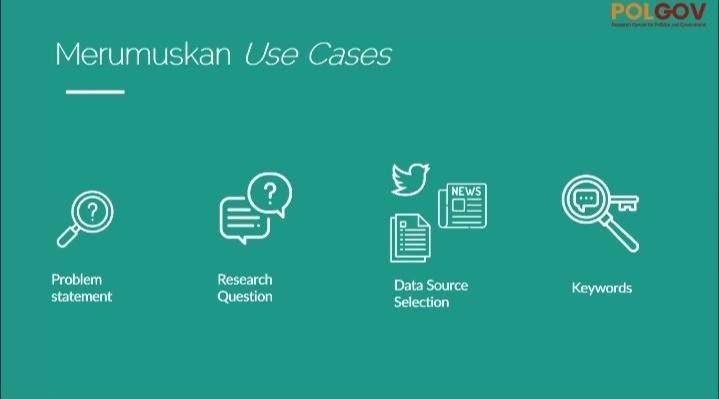
As a social and political science student, concentration in research also refers to various social political phenomena. In this case, the existence of big data can be used as a tool to conduct research. However, in many occasions, every research can be approached with the big data analysis method.
To start the research, it is imperative to find some research ideas. In this case, there are two ways to land on an idea; by finding the theoretical gap or through phenomenon. If using the phenomena method, a researcher must be more sensitive to the social political phenomena around them. This method leads to the bottom-up model where a researcher starts looking for ideas by seeing the phenomena around them, and then followed by finding the adequate theory. Meanwhile, for the theoretical gap method, researchers see a certain theory and see it in a top-down manner by finding a phenomena that is adequate with the existing theory. However, both methods still need a researcher’s sensitivity towards social political phenomena, which can be trained by reading and understanding a lot of academic journals.
Formulating Use Cases
Use cases are one of the important parts that needs to be paid attention to in a research. Formulating use cases in the big data analysis method can be done through four phases; problem statement, research question, data source selection, and selecting keywords.
In the problem statement step, the steps that need to be taken are to find the dominant topics talked about by the scholars. After reading a lot of academic journals, a researcher has to explain the dominant topics and what are the missing materials from the discussion, or the lesser talked about topics. Then, the scholar can see the discussion gap evident in the topics.
After getting some ideas from the aforementioned step, the next step that needs to be done is to create some research questions. In this case, the questions need to refer to the phenomena that will be discussed. These questions can also make the next step, which is data source selection where researchers have to know the needed date for their research, much easier. The last step is to pick the keywords which will become the data source of the research.
Starting to do research with the big data method is something that can be learned, if we do want to learn it. In this case, the information source about the topic can be taken from many platforms. However, to understand the method, we need to understand the basic logic that is constructed by four cycles which are scrolling, cleaning, filtering, and visualization. This is a never ending cycle which in the governmental politics study can be started with the research idea, which is followed by the big data, and then by formulating the ‘discuss’ that will be used.
